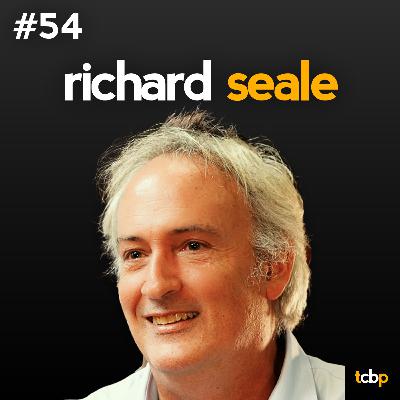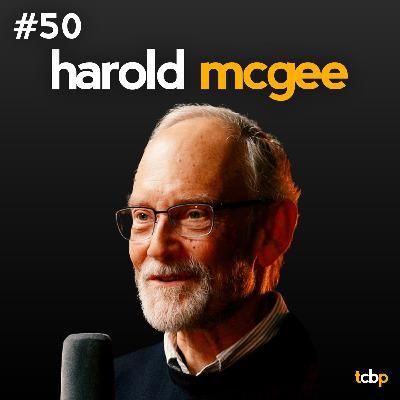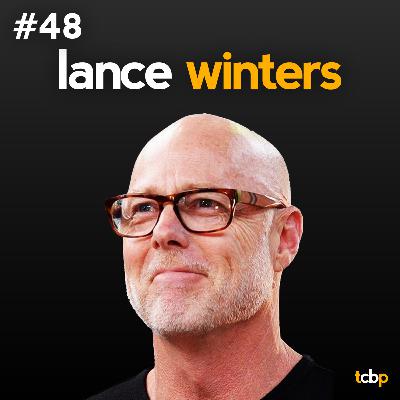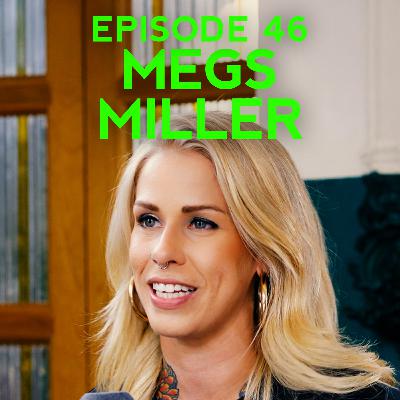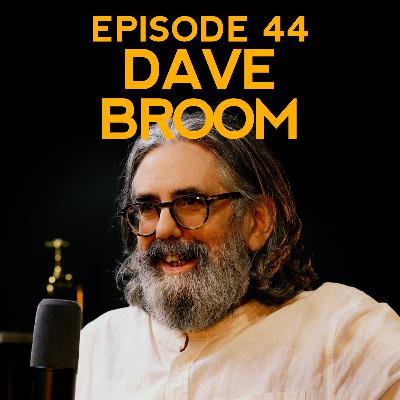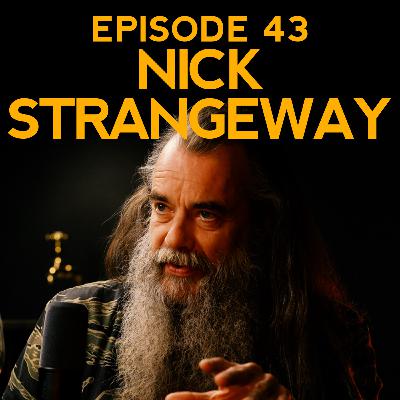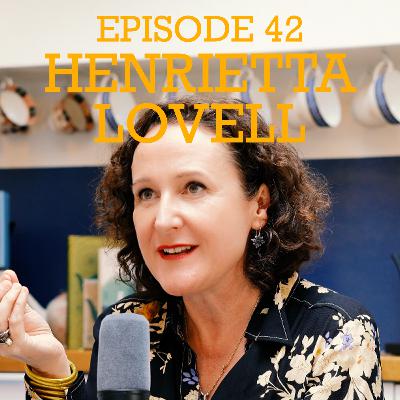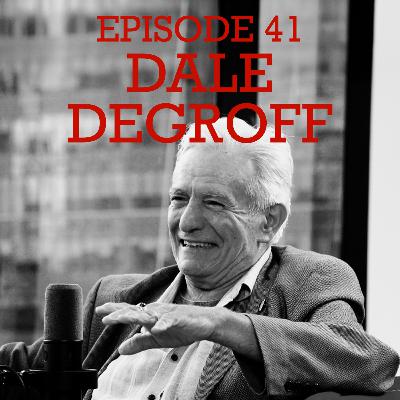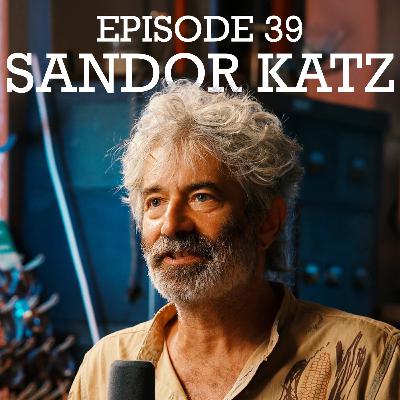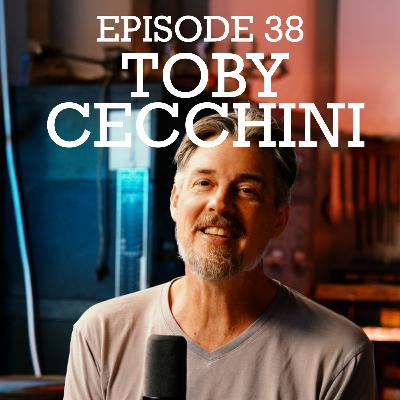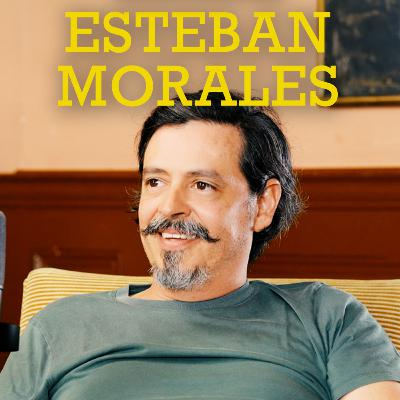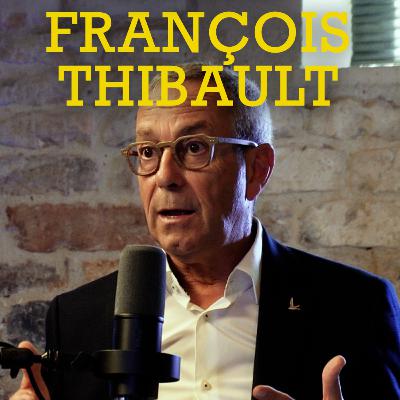Discover The Curious Bartender Podcast
The Curious Bartender Podcast

54 Episodes
Reverse
In this episode, Richard Seale of Foursquare Distillery joins me for a fast-moving deep dive into the history, culture and technology of rum — from 17th-century Barbados to the modern distillery.Key Topics:Is Barbados the birthplace of rum?Richard explains why the island is the true origin of cultural rum-making — not because it was “first”, but because it produced the earliest consequential, documented rum industry with skilled distillers, equipment, trade routes and scale. Sugar, the Dutch, and the rise of an industryWe explore how Dutch traders brought Brazilian sugar technology, how Barbados’ wind and water resources made large-scale production possible, and how early planters rapidly adopted boiling, milling and distillation methods. Early rum wasn’t crudeContrary to modern assumptions, 17th-century rum was sophisticated: spontaneous fermentations managed with skimmings and dunder, double distillation in copper, and a deep practical understanding of acidity and microbial balance. Export markets and the fall from dominanceBarbados supplied the American colonies with vast volumes of rum until war, revolution and hurricanes collapsed its export market — paving the way for Jamaica and others to dominate. The sugar industry’s long arcRichard traces the rise, centralisation and 20th-century collapse of Barbados sugar, from hundreds of estates to the single remaining factory today. The double retort pot stillA highlight of the conversation: why the double retort became the Caribbean’s signature still. Richard explains its structure, how low wines and high wines recycling works, and why it produces high proof, clean separations and excellent ester development. Batch vs continuous distillationWe cut through common myths: pot stills versus continuous stills, why “hybrid still” is a misnomer, why strength doesn’t equal flavour loss, and how batch and continuous distillation differ fundamentally in chemistry and output.
Jeff Morgenthaler has been a defining voice in the bar world for more than two decades. Bartender, blogger, and author, he’s shaped modern drinks culture through his long-running blog — still one of the most valuable resources on bar technique — his years at Portland’s much-missed Clyde Common, and his influential writing, including The Bar Book. Today he continues to travel, teach, and inspire, sharing clear, grounded insight into every corner of cocktail craft.Jeff played a part in my own development early on, too. His blend of logic, humour, and precision helped validate the path taken by so many of us, and his influence on the industry — direct and indirect — is larger than most realise.Although Jeff and I have known of each other for nearly twenty years, this was our first time sitting down together. The conversation ranged widely across the landscape of bars, technique, and drinks culture.In this episode you’ll hear how Jeff found his way behind the bar, why baijiu deserves more appreciation, how to make your own cola, the early-2000s figures who shaped both our careers, how he riffs on eggnog, the common mistakes people make when batching syrups (and how his tools can fix them), what it’s really like to write a book, our thoughts on the World’s 50 Best Bars, what defines a truly great bar, and plenty more.www.jeffreymorgenathaler.com
In this episode of The Curious Bartender Podcast, we welcome Jota Tanaka, Master Blender for Kirin’s Fuji Gotemba Distillery and Executive Fellow, Kirin Whisky. His career spans brewing, winemaking, American bourbon and Japanese whisky.Jota joined Kirin Distillery Co. in 1988 and after roles in Japan and the United States, including a period at Four Roses Distillery where he helped launch the Small Batch range, he returned to Japan and became Master Blender of Kirin Whisky in 2017.We explore his career, the story of Fuji Gotemba at the foot of Mount Fuji, and the evolving world of Japanese whisky including its history, methods, sensibilities, controversies, consumption and future.Fuji Gotemba Distillery bio: https://www.fujigotemba-distillery.com/en/takumi/01/
Camper English is a San Francisco–based drinks writer and educator, best known for his long-running website Alcademics.com, an invaluable resource for bartenders and drinks enthusiasts alike. He’s the author of Doctors and Distillers: The Remarkable Medicinal History of Beer, Wine, Spirits, and Cocktails (2022) and The Ice Book.I sat down with Camper recently in San Francisco to talk about the city’s distinctive bar scene — from its historic haunts to its cutting-edge cocktail bars. We then dive into the fascinating world of ice (a subject Camper has explored more deeply than anyone), discuss Doctors and Distillers, and wrap up with a conversation about mineral water — including how to make your own.Doctors & Distillers - https://alcademics.com/doctors-and-distillers-the-remarkable-medicinal-history-of-beer-wine-spirits-and-cocktails/The Ice Book - https://alcademics.com/the-ice-book-by-camper-english/📷 Follow me on Instagram - https://www.instagram.com/tristanstephenson/📚 I've written quite a few books on spirits and cocktails - https://www.thecuriousbartender.com/
Harold McGee is a man that requires no introduction if you are someone who has worked in food and drink in any capacity at all. In 1984 he published McGee On Food & Cooking and brought the science and technology of cooking and flavour to the masses. A second edition in 2004 served as the practical manual for any chef worth their salt, and elevated Harold to the status of godfather - or perhaps even god - of culinary science. More recently, he published a book called Nose Dive, which investigates aroma and smell, which is a topic we explore during our conversationAlso on the menu:Why humans enjoy bitterness, how herbs have co-opted us, how salt makes food more delicious, how water opens up the aromas of spirits, what happens when wine matures in the bottle, why some drinks have ‘length’, how evolution and culture have shaped our flavour preferences, what we mean when we say a drink or dish is balanced, what the next frontiers of flavour science look like, and much more.📷 Follow me on Instagram - https://www.instagram.com/tristanstephenson/📚 I've written quite a few books on spirits and cocktails - https://www.thecuriousbartender.com/
Today I am speaking with Serge Valentin. Serge is a whisky expert and the founder of a whiskyfun.com - which is widely regarded as the go-to review repository for whisky tasting notes and scores on the internet. Over the past 23 years Serge has tasted over 20,000 bottles ranging from entry level staples to some of the rarest in the world. His scoring system has become the de facto benchmark by which many measure the quality of a dram, and Serge has become a cult hero amongst the world’s whisky geeks.On the episode we discuss tasting whisky - personal preferences over objective goodness, the hubris of blind tasting, whether whisky is too serious, the role of independent bottlers, how whisky changes in the bottle, recent exceptional whiskies, weird whisky, the founding of whiskyfun.com, the importance of education, changing tastes, whisky myths, and much more.
In today’s episode, I’m joined by one of the true mavericks of American distilling — Lance Winters of St. George Spirits. This is a journey that begins in the orchard, with pears, quinces and raspberries destined for eau de vie, and stretches all the way to absinthe, American gin, rum and even highballs built on umeshu and Baller whisky.We trace the roots of St. George back to Jörg Rupf and the early days of California craft distilling in the 1980s, and follow Lance’s arrival and the evolution of a house defined not by category, but by philosophy. Along the way we dive into the uncompromising art of eau de vie — fruit selection, fermentation, and the stills that shape every spirit they make — and ask how that sensibility influences whisky, rum and beyond.From jalapeño vodka to acorn spirits, from dill lactones in oak to the question of consistency versus expression, this conversation is about more than products. It’s about place, curiosity, and a willingness to let flavour lead. We explore American gin through Californian botanicals, the rebirth of absinthe, the origins of Baller, the future of eau de vie, and where all this innovation leaves the legacy of St. George.This is not a tour through a portfolio — it’s a look inside a creative engine. To support the show please rate, subscribe and share - thanks!
Charles Denby is the co-founder and CEO of Berkeley Yeast, a company that’s reimagining fermentation through genetics. With a PhD in molecular and cell biology from UC Berkeley, Charles and his team are using genetic science not to replace brewing tradition, but to enhance it — designing new yeast strains that can transform how beer, wine, and even spirits are made.In this conversation, we dive deep into the biology that underpins flavour. We unpack what yeast actually is, why it produces alcohol, and how its metabolism creates the esters and aromatics we love in drinks. Charles explains how fermentation conditions shape flavour, how lager and ale yeasts differ, and what really happens inside the tank at every stage of fermentation.From there, we go microscopic — exploring yeast genetics, DNA modification, and the molecular tools that make it all possible. Charles shares how Berkeley Yeast engineers strains to enhance tropical aromas in hazy IPAs, introduce new layers of bitterness, or even make brewing non-alcoholic and healthier beers more efficient.We also discuss the broader implications of this technology — from applications in wine and spirits to the stigma surrounding GMOs and what “responsible innovation” really means in the drinks world.This is a fascinating deep dive into the invisible world that drives fermentation — and how science is quietly shaping the future of flavour.If you like this content please consider subscribing.00:00 Introduction02:34 Charles’ Background in Science & Origins of Berkeley Yeast10:29 What is Yeast? Why Does it Produce Alcohol? Yeast Metabolism16:49 Fermentation Conditions, Ester Metabolism22:04 Yeast Species: Lager & Ale Yeasts24:24 Stages of Fermentation28:34 Nutrients for Fermentation, Amino Acid Synthesis, Diacetyl Production36:34 Why Is Beer Fizzy? Production of CO2 During Fermentation37:34 Yeast Genetics, Cell Biology, Evolutionary Biology42:29 Modifying Yeast DNA, Molecular Scissors, Polymerase Chain Reaction55:54 The Complex Web of Genetic Modification1:01:14 Testing Yeast in Berkeley Yeast’s Microbrewery1:04:04 Comparing Hazy IPA Yeasts, Creating Tropical Aromas1:09:19 Engineering Yeast for Bitterness1:12:04 Brewing Non-Alcohol Beer, Vacuum Distillation: Method, Downsides1:16:54 Brewing Beer for Health1:22:17 Applications in Wine: Flavour, Low-Alcohol, Cultural Knock on Effect1:26:14 Residual Sugar in No/Low Alcohol Ferments1:27:59 Applications in Spirits: Flavour & Efficiency1:30:49 The Berkeley Yeast Business Model, Lifespan of Yeast Cultures, Competition1:35:44 Overcoming the Stigma of GMO, Responsible Technology, Defining GMO in Beer
Megs Miller is a bartender, educator, and all-round agave obsessive — whose journey has taken her across multiple continents but most recently to Mexico City, where she runs Salón de Agave, a tasting room dedicated to exploring the depth and diversity of Mexico’s native spirits.In this episode, you can expect to learn about agave species and taxonomy, how different agave species affect the mind and body — Megs and her co-worker Sophie have been conducting a two-year experiment on this — insights into retailing agave spirits in Mexico, the nuances of terroir and regional flavour mapping, and the joy of glass-matured mezcal.We also dive into sotol, pulque, and the evolving conversation around responsibility, sourcing, and politics in agave spirits. From the cheesiness of Inaequidens to the pine forests of Chihuahua, and from women’s progress in the industry to the cultural storytelling behind each bottle — this is a deep and generous look at the Mexican spirit.Megs was so generous, in fact, that we tasted around 25 different distillates — and as someone who’s tasted quite a few in my time, I wasn’t surprised to find that there were many amazing surprises. I wasn’t able to write down or document them all, but if you’re interested in anything in particular, I suggest giving Salón de Agave a follow on Instagram or booking a session with them next time you’re in Mexico City. It’s awesome.https://salondeagave.com/00:00 Intro02:25 Meg’s Trip to Durango06:25 Agave Species and Taxonomy, Tequila11:25 How Different Agaves Affect Your Body, Agave Spirits Distillation15:35 Retail of Agave Spirits in Mexico16:35 Terpenes in Agave Spirits, Health18:55 Moving to Mexico – Opening Salón de Agave26:25 Glass-Matured Mezcal, Pechuga, Salt & Lime37:25 Agave Education, Price & Value45:05 Mapping Flavour Around Mexico, Terroir49:55 Tasting Maguey Inaequidens Agave, Cheesiness, Narcos56:45 Back to Durango, Maguey Lampranillo, Label Design1:00:35 Tasting Vino del Norte from Pechotierra, Pulque Production, Appreciating Pulque1:06:40 The Evolving Flavour of Agave Spirits, Appreciating Agave Spirits, Glassware1:08:15 Sotol, Dasylirion1:10:32 Texture and Mouthfeel in Agave Spirits, Tuning Your Flavour Perception, Context in Tasting1:19:25 Mezcal Labelling, DO, Rebellion, World Agave Spirits, Mezcal Politics, Responsible Sourcing1:28:25 Chihuahua Sotol, Pine Forests, Cultural Terroir1:31:42 Women in Agave Spirits: Challenges, Progress1:40:25 Guerrero Cupreata, Inconsistency, Scarcity, Bottle Killing1:45:15 Distilado de Pulque from Salmiana, Mango Distillate1:48:45 Identifying Agave by Smell: Inaequidens & Salmiana, San Luis Potosí Agave Cooking1:51:45 Challenging Preconceptions in Agave Spirits, Smokiness1:54:25 Oaxaca, Small-Batch Cupreata, Cowhide Fermentation1:56:35 Tasting Notes, Describing Flavour, Context
Richard Hart is one of the world’s most respected bakers and a celebrated author. He first rose to prominence in the early 2000s while working at the legendary Tartine Bakery, San Francisco. From there, he co-founded Hart Bageri with René Redzepi in Copenhagen, before relocating to Mexico City, where he recently opened his latest venture, Green Rhino. Richard is also the author of the James Beard Award–winning book Richard Hart Bread, and is widely regarded as one of the greatest exponents of sourdough bread on the planet.In this episode, we dive deep into the craft and science of sourdough: how Richard’s methods and protocols have evolved over the years, the role of different cereals and milling techniques, the importance of water in bread, yeast management, ovens and baking temperatures, and practical tips for baking at home. We also explore bread culture and chew over some wonderfully contentious questions — from whether a pizza qualifies as a sandwich to the eternal mystery of the Jaffa Cake.Although this is primarily a podcast about spirits, cocktails, and bars, The Curious Bartender is ultimately about curiosity. Bread has always fascinated me, and sitting down with one of the key figures who helped popularise sourdough worldwide was an opportunity I simply couldn’t turn down. It didn’t disappoint.00:00 Introduction01:44 Drinks Preferences 02:44 Balancing Eating & Exercise as a Chef & Baker, Working Hours 06:14 Baking Schedule & Flavour Considerations 08:44 Baking at Tartine in San Francisco, Instagram & Fame 12:29 Working with Rene Redzepi, Copenhagen, Hart Bageri, Danish Bread Culture, Family 19:29 Moving to Mexico City, City Life, Gentrification 23:14 Opening Green Rhino, Baking for Life, Incorporating Mexican Food, Chocolate, Corn, R&D, Fucking People Up 30:54 Flour, Milling, Selecting Wheat, Sourdough Process: Temperature & Time, Gluten 39:04 Water for Baking 40:59 Sourdough Starters: Superstition, Protocols, Effects of Altitude in Mexico City 48:29 Pursuing the Perfect Loaf, Defining a Perfect Loaf, Tweaking Parameters, Comparison to Cooking and Cocktails 54:04 Working with Rye, Danish Bread Culture 57:34 Other Grains: Oats, Spelt, Durum, Einkorn 1:00:44 Water Substitutes: Beer, Tea 1:03:04 Making Brioche, Burger Buns 1:05:44 Stoneground flour, Wood fired ovens, Thermo-oil vs Electric Ovens, Oven Dynamics 1:08:58 Baking Bread at Home - Techniques and Tips, Temperature & Steam 1:12:01 Is Bread The Best it’s Ever Been? Fixing Supermarket Bread 1:15:11 Bread Guilty Pleasures 1:15:53 Is a Pizza a Sandwich? 1:18:58 Burger Flipping Masochism 1:20:50 Is a Jaffa Cake a Cake or a Biscuit? 1:21:14 Sandwich Filling & Bread Pairing
Dave Broom is one of the most prominent and influential voices in the world of whisky and over the course of his career he has written some of the most important books on whisky and spirits including The World Atlas of Whisky, Whisky: The Manual, A Sense of Place, and The Way of Whisky — works that have shaped the way both enthusiasts and professionals understand flavour, culture, and the people behind the glass.On the episode we delve into the all important sense of place — from the cultural terroir of Scotland to the artistry and craft of distilling, and how flavour finds its way into the glass. Dave takes us from Japan to New Zealand, from English farms to French stills, as we explore the global spread of malt whisky and why everyone seems to be making it.We also get into his writing: the discipline, the methodology, the architecture of narrative non-fiction, and the influence of mentors like Michael Jackson. Along the way, we talk music, art, storytelling, and the state of drinks journalism today.And we taste some stuff too — French sorghum whisky, Breton malts, German rye, and the genius of Chichibu, and a sneak preview of the whisky from my new project at Rosemaund Farm — each dram opening the door to wider conversations about style, strength, regionality and the shape of whisky itself.And we close with the big themes: whisky’s current bubble, the secondary market, daily drams, and favourite distilleries.02:37 A Sense of Place - Terroir in Spirits, Scotch Whisky Cultural Terroir10:02 Artistry & Craft in Whisky Making - Learning from Masters, Adapting Tradition, Economics and Law15:07 How Do Flavours Find Their Way Into Whisky? The Way of Whisky and Japan19:42 Whisky In New Zealand - Codrona, Burning Manuka Wood, Waiheke Distillery22:17 Why is Everyone Making Malt Whisky?23:59 Writing - Latest Project, Mixing American Whiskey, Untold American Whiskey History, Researching History34:27 Dave’s Writing Process - Research, Poetry, Methodology - The World Atlas of Whisky: Influence, Practicality39:48 Writing Narrative non-fiction - Road Trip Books, Telling Stories, Narrative Architecture, The State of Drinks Journalism, Content and distraction, Photography52:17 The Arts & Spirits - Music, Art, Culture56:47 Tasting Bows French Sorghum Whisky - The French Whisky Category, Regionality, Eau de Vie1:02:07 *Dave’s Methodology for Assessing Whisky - Writing Tasting Notes, The Shape of Whisky1:07:37 The Macbeth Whisky Series - Making Whisky Fun through Communication of Flavour1:11:07 Tasting Rosemaund Farm 10 Year Old English Whisky1:17:30 Whisky Bottling Strength - The English Whisky Category1:20:42 Dave’s Early Career - Writing, Oddbins, Pubs, Becoming a Spirits Writer1:25:37 The Influence of Michael Jackson - Writing Style, Beer, Writing for Consumers1:28:57 Dave’s Writing Style - Poetry, Discipline, Trade Knowledge1:32:42 Tone of Voice in Writing1:34:07 Tasting Breton Whisky from Distillerie La Mine D'or ‘Galad’, Armorik Distillery, Development of French Whisky Market1:37:12 *The Bursting of the Whisky Bubble - Overproduction, Lessons from the Past, Pricing, Perception of Whisky1:48:47 Secondary Whisky Market - Auction House Bubble, Karuizawa, American Whiskey1:51:42 Opening Rare Bottles, Buying Whisky, Daily Drams, Changing Preferences for Taste1:57:27 Tasting Hardenberg German Straight Whisky - Leopold Bros.2:00:09 Chichibu Tasting - The Genius of Ichiro Akuto, Malting, Barley, Mizunara2:03:56 Quickfire QuestionsDave's site - https://thewhiskymanual.ukDave on Instagram - https://www.instagram.com/davewasabi/Liquid Antiquarian YouTube Channel - https://www.youtube.com/c/TheLiquidAntiquarianRosemaund Farm Distillery - http://www.rosemaund.com📷 Follow me on Instagram - https://www.instagram.com/tristanstephenson/📚 I've written quite a few books on spirits and cocktails - https://www.thecuriousbartender.com/
This week I’m joined by Nick Strangeway, one of the most influential British bartenders of the modern era. With almost 40 years in and around the London drinks scene, Nick has tended bar at legendary spots like Fred’s Club, The Atlantic Bar & Grill, and Che, designed drinks programmes for Hawksmoor, Hix, and The Groucho Club, and consulted for venues worldwide. He’s also ventured into spirits production — from creating flavoured vodkas with Absolut under the Absolut Craft label, to co-founding Hepple Gin and Second Sip, a low-ABV gin.Nick’s career is deeply intertwined with the late, great Dick Bradsell. They worked together on and off for over a decade, and much of the first part of our conversation explores Soho’s 1980s and 1990s bar scene — the people, brands, drinks, and wild stories that defined the era.We go on to cover everything from the art of serving a martini, creativity in bartending, the brilliance of batching, the gentrification of London, Simon Difford and Class magazine, taking inspiration from the kitchen, the beauty of punch, the problem with bars you can’t sit at, fighting customers, and Nick’s latest venture — a new basement bar beneath a jeweller in Burlington Arcade, which opened just last week.If you’re not yet subscribed, now’s the time. Next week, I’ll be speaking with perhaps the greatest living whisky writer, followed by a two-week trip across Mexico and the USA to record with some true heavyweights of the food and drink world. Don’t miss out — it’s free.00:00 Introduction02:42 Frozen Glasses, Martinis, Champagne, Specifications, Vermouth 06:59 Nick’s Entry into Bars - The Allure of Bars, Fred’s Club 11:42 Working with Dick Bradsell - Bramble, Vodka Espresso 15:42 The Changing Nature of London - 1980’s to 2020’s - Drinking Dens in Soho, Gentrification, Community, Class 24:12 Modern Bartending: Influencers, Competence, Creativity, Hospitality, Bar as a Barrier 34:22 Working at Che - The Customer Perspective, Fighting in Bars, Dick Bradsell Vaulting Over the Bar 39:57 Following Dick Bradsell to Atlantic Bar & Grill, Detroit, The Flamingo, Dick Bradsell’s Approach to Hospitality & The Scene 53:19 Creating Cocktails - Modifying Classics, Simon Difford - Class Magazine, Sauce Guides 59:22 American Cocktails vs. UK, Punches 1:04:22 Shifting to Restaurant Bars - Challenges, Chef Approach to Drinks, Batching Cocktails, Theatre, Bars that You Can’t Sit At 1:24:42 The Origins of Hawksmoor - The Benefits of No Uniform, Building a Great Team, Obsession, Eating Pencils, Jonathan Downey & the Smoking Ban 1:43:21 Developing spirits for Absolut 1:48:57 The Birth of Hepple Gin - Valentine Warner, Walter Riddel, Northumbria, Wild Juniper, Technology - Super Critical CO2 Extraction 2:00:37 Second Sip Low ABV Gin - Development, Leo Robitschek, Overcoming Technical Challenges - Texture, Louche 2:11:02 No Regrets Bar - Designing a New Bar Concept for Mayfair, Curating Clientele 2:18:12 Other Projects - Richard Corrigan, Valentine Warner & Wild Kitchen Episode sponsored by Fever-Tree
Henrietta Lovell is the founder and CEO of The Rare Tea company, a tea educator and author of the book Infused: Adventures in Tea. Over a career of more than 20 years Henrietta has travelled around the foothills of the Himalayas, across China, Japan, India, and Malawi, sourcing some of the best teas in the world and learning from the communities that grow them. She has worked with world class chefs and bartenders, including supplying tea at some of the bars I have owned over the years. In fact we first met around 15 years ago when I opened the Worship Street Whistling Shop in London.This episode is a tea masterclass that covers the basics of growing, processing, brewing and tasting tea, but also explores, history, economics, sustainability, agricuture, health, poverty, and some of the most expensive teas on the planet. Expect to learn where most of the world’s tea is grown - clue it isn’t china or India, why it is the Emperors Golden Eyebrows costs in excess of £250 for a 30g bag, why you shouldn’t ever brew good tea for three minutes, best practices for making tea infusions in spirits and for the bar, and much more.To support this podcast please like and subscribe.🙏 This episode is sponsored by Fever-Tree📷 Follow me on Instagram - https://www.instagram.com/tristanstephenson/00:00 Introduction 01:41 Cold Brewed Tea - Avoiding oxidation, Osmosis, Method06:21 The Remarkable way that high end Jasmine Tea is Made, tasting, uses of Jasmine tea Noma10:56 Tea as an Alternative to Wine - tasting Himalayan First Spring blended with Japanese Sencha13:24 Tea Varietals, Colonial History, Early Tea Drinks in India, Blending Tea & Comparisons to whisky19:11 Tea Types - White, Green, Oolong, Black, Pu’erh - Controlling Oxidation, Drying, Terroir and Agriculture, Fermentation25:24 Where Tea Grows - Environment26:41 East Africa, The Problem with Commodity Tea, Brokers, Responsible Tea Drinking, Direct Trade32:46 finding the Best Teas - Flavour, Independent, Organic Practices (vs. Organic Certification), Polyculture Framing, Impact of other Flora on Tea38:27 The Lifespan of a Tea Plant, Harvesting (Machine vs. Hand), Risk of Tech on Tea Communities45:51 Perception of Tea - Taste Testing, The Problem with Tea Bags, Practicality of Brewing Tea vs. Coffee54:16 Fruit Teas - Flavour Essences, Fruit Extracts01:00:46 Trading Up on Tea - What to Look For, Margins on Tea1:05:44 Tasting Coffee Leaf Tea1:08:31 Pu’erh Tea - Pairing for Food, Flavour, Ageing Tea, Tea Cakes, Tea Collectors, Tong Mu Village, Emperor’s Golden Eyebrow Tea1:17:21 Brewing Techniques - Equipment, Temperature, Brew Ratio, Time1:28:14 Carbonating Tea, Salting tea, Pairing with Cheese1:30:18 Matcha - Colour, Origins, Production (traditional vs modern), Commodity Matcha Syrups & Matcha Trend, Matcha and Coconut Water1:40:23 Caffeine in Tea - Inconsistency, vs. Coffee, Decaf Tea1:43:53 Alcohol based Tea Extractions - Protocols, Flavour, demo with Gin Infusion, Tea Cocktails1:52:11 Closing Words - Tea in the Present Day, Yerba Maté
Dale is a bartender, author, brand owner, and the co-founder of the Museum of the American cocktail. In the late 90’s working at NYC’s Rainbow Rooms Dale was probably the most famous bartender on the planet and has remained one of the best loved bartenders to this day. I sat down with Dale in Manhattan a few weeks ago, looking out over the Empire State Building as the sun went down. The interview was scheduled during a very tight window of opportunity between Dale arriving back from Tales of the Cocktail in New Orleans and me catching a flight back to London. We had just 90 minutes, which wasn’t nearly enough time for a man with some many stories and such a sharp memory.In fact chronologically we barely got to 1990 before I had to turn off the microphones and hot foot it to catch my flight. For that reason, I am calling this interview Part one and hope to sit down with Dale to record the second part next year - and who knows, maybe we will need a third part.What you are about to hear is less a story of Dale’s career and more a tour of New York and Los Angeles hospitality from the late 1950’s through to the 80’s, exploring its jazz clubs, neighbourhood bars, and some of the greatest restaurants and hotels of the 20th century. Dale recounts the musicians that provided the soundtrack, the chefs that designed the cuisine, and the architects that imagined the buildings, all in vivid detail.Perhaps the most significant of these people to Dale, was Joe Baum - one of the United States most significant restauranteurs who introduced the concept of themed restaurant tot he world with no expense spared. Working with acclaimed chefs like Julia Child and James Beard, he opened hundreds of restaurants across America, most notably The Four Seasons Restaurant, Windows of the World at the top of the world trade centre, and the Rainbow Room at the Rockefeller Centre. You’ll hear about other venues during the course of our conversation too.We also discuss the founding and challenging upbringing of the Museum of the American Cocktail, the incredible aesthetic and culinary vision of Joe Baum, the establishment of modern American cuisine, what it was like working at the Bel Air Hotel in the 1980’s, the establishment of The Rainbow Room, and much much more.There are perhaps 100 different names and venues mentioned in this episode and it can get quite confusing. If you’re of the mind to do so I recommend watching the episode on YouTube when you get a chance, as I have provided archive images and captions to help paint the picture.Episode sponsored by Fever-Tree Mixershttps://degroffspirits.com00:00 Introduction03:11 Tales of the Cocktail06:41 Building the Museum of the American Cocktail - Jared Brown & The Rainbow Room, Ted Haigh, History of the Cocktail, Building the Collection, Locations20:09 Dale’s Early Life - Acting, Moving to Manhattan, Packing Bibles*, Restaurant Associates, Howard Johnson’s, Jazz Clubs*, McGlade’s Bar38:11 Working with Joe Baum, Restaurant Associates, Charlie O’s, Newarker, Four Seasons at the Seagrams Building, Modern American Cuisine, James Beard, La Fonda del Sol53:59 The Rainbow Room: Early History, Design55:11 Bel Air Hotel in Los Angeles - Cocktails, 7/11 Mix, Martini Rituals*1:06:32 Aurora Restaurant, Reviving Classic Cocktails, Fresh Juices, Jerry Thomas1:08:11 Building the Rainbow Room - Researching Classics, Recruiting Teams1:18:01 Becoming Famous, Impact on cocktail culture around NYC, Consulting with Keith McNally - Balthazar, Pravda, Lucky Strike
Today I am speaking with Alexandre Gabriel. Alexandre is the founder of Maison Ferrand, Citadelle Gin, and Plantation—now Planetary—Rum. Expect to learn how a Burgundian farm boy turned his hand to bartending in New York and then went on to innovate across the categories of cognac, gin and rum. We take a deep dive into the production of Cognac - terroir, grape varieties, distillation, maturation, and discuss the changing market of cognac in France and abroad.From there we turn to gin, covering the birth of Citadelle in 1996 and the challenges of establishing the world’s first modern craft gin distillery. The conversation then shifts to rum—Alexandre’s early encounters, the founding of Plantation, double maturation, Jamaican and Barbadian styles, muck, dunder, and the acquisition of West Indies Rum Distillery. We taste our way through the Rockley still, and high-ester ferments, and discuss geographical indications, tradition and community. We also discuss the decision to change the Plantation brand name to Planetary, and much more.00:00 Introduction & Clarification on Jamaican Rum GI05:16 Origin Stories - Childhood, Farming, Marc de Bourgogne, Growing What You Sell, Wine vs. Brandy, Bartending in NYC16:06 Cognac - Acquiring Ferrand, The Cognac Market18:16 The Cognac Regions, Cognac Houses, Geology & Flavour, Terroir, Yeast30:56 Grape Varietes in Cognac - Ugni Blanc & Colombard - Acidity, Stability, Producing Seasons33:36 Emphasis of Distillation over Fermentation37:18 Maturation in Cognac - Coopers, Elevage, Limousin Oak, Gastronomic Approach, Trancais, Fill Strength51:41 Tasting Ferrand 1840 - Finding old Cognac, Perception of Flavour based on Dilution, Historical Recipes, David Wondrich & Mint Juleps, Ancient Still Designs, The Evolution of Tradition1:04:09 Dosage in Cognac - Methods, Purpose, History - Physiology of sweetness and salt perception, sugar quality1:11:59 Changing Perceptions of Cognac - Cognac highballs, Misconceptions and Understanding1:17:52 Creating Citadelle Gin - Gin Market in 1996, First Craft Gin Distillery of Modern Era, Growing Juniper, Legislation, Plymouth Gin, Ferran Adrià1:32:24 Rum: Alexandre’s Early Experiences with Rum1:34:16 Thierry Gardère and Barbancourt, buying barrels, the origins of Plantation, Navy Rum & Mr Fogg1:42:56 Establishing the Plantation Brand - Nicolas Wine Shop Distribution, Naming the brand Plantation, First products, West Indies Rum Distillery team, Amaretto Cask Rum1:47:04 Double Maturation in Rum - Tropical and Continental - History, Benefits1:52:06 Jamaican Rum GI - Regulation Regarding Overseas Ageing, Myers, Captain Morgan - comparison to Single Malt Scotch2:00:18 Clarendon & Long Pond Distilleries - Southern vs. Northern Distilleries Styles in Jamaica - Historical reasons for styles, Esters, Export2:06:16 Muck, Dunder, Cane Vinegar & Bacteria in Rum Fermentation2:09:12 Acquisition of West Indies Rum Distillery (WIRD) in Barbados - George Stade (Founder), Origins of NRJ2:19:41 Stade’s Rum - Rockley Still: World’s Oldest Rum Still, Restoration, First Distillation2:26:22 What is Barbados Rum? Varieties of Stills, History, Using Seawater in Rum Production2:30:58 Tasting Hogo Monster - 2000ppm Esters2:36:05 Stiggin’s Pineapple Rum, Pushing the Limits2:38:16 Barbados Community, Growing Cane on Barbados, Curacao2:41:49 Next Steps: Cognac grapes, Renovating more stills, Navy Rum R&D, Paraguay2:46:41 Changing from Plantation to Planetary - Language, History, ConsultationEpisode Sponsored by Fever-Tree
Sandor Katz is ften called a “fermentation revivalist,” Sandor has spent decades exploring how microbes shape our food, our drinks, our culture, and even our sense of place. He has written a number of book son the subject including Wild Fermentation, The Art of Fermentation, Fermentation as Metaphor, and Fermentation Journeys — the latter chronicling his travels to meet fermentation practitioners across the globe. His bestselling The Art of Fermentation won a James Beard Award and has become the definitive modern guide to the craft. In this conversation, we journey from the very origins of fermentation and the metabolism of alcohol to the staggering variety of fermented foods and drinks in our diets — and why they’re so much more than just flavour. We dismantle common misconceptions around health, freshness, and speed, and dive deep into Sandor’s own path into this microbial worldAlong the way, we unpack the fascinating interplay of bacteria, yeast, and mould, the difference between wild and cultured ferments, and how fermentation can capture the essence of a place, from mezcal to sourdough. We explore everything from lightly fermented tonic beverages and experimental meads to the wonders of koji mould and its transformative enzymes. And yes — we even get into the bad, weird, and downright challenging ferments, from stinky tofu to the notorious surströmming.Whether you’re a brewer, bartender, chef, or simply curious about the invisible life that feeds us, this episode is a deep dive into a living tradition — one that’s as old as civilisation, and as alive as the microbes themselves.02:55 The Origins of Fermentation - Metabolism of Alcohol06:42 The Breadth of Fermented Foods in our Diets - Flavour, Preservation, Texture09:45 Misconceptions About Fermented Food & Drink - Language, Health, Germophobia, Challenging the Notions of Fresh & Fast21:04 Sandor’s Journey in Fermentation - Childhood Encounters, Macrobiotic Diet24:25 Gardening, Fermenting Tomatoes, Other Preservation Techniques, Fermentation Traditions29:50 Microbes: Bacteria, Yeast & Mould - Isolation, Symbiosis, Environmental Conditions, Making Sauerkraut37:14 Pathogenic Bacteria vs. Lactic Acid Bacteria38:17 Wild vs. Cultured Fermentation - Backslopping, Sourdough, Making Yoghurt, Pure Culture Starters, Natto Bacteria47:25 Fermentation as a Manifestation of Place - Mezcal, Bioprospecting for Yeast58:00 Yeast - Efficiency vs. Flavour59:49 Experiments in Alcohol Fermentation - Rice, Chinese Yeast Balls, Sumac Mead, Turmeric Mead1:03:24 Tips for Wild Alcohol Fermentation - Stirring, Sugar, The Myth of Sterilisation, Protocols1:09:00 Lightly Fermented Tonic Beverages - Tepache, Chicha, Country Wines, Orange Blossom Cordial, Meadowsweet Wine, Spruce Tip Wine, Root Beer, Ginger Beer1:14:10 Water Kefir & Kombucha - Biology, Flavour Development, Alcohol Development, Commercialisation of Kefir & Kombucha, Origins1:23:11 Koji Mould - Biology, Applications, Protease Enzymes, Sake, Soy Sauce1:30:25 Use of Fermented ingredients in Bars and Restaurants - Cocktail Hacks, Sustainability, Narrative1:37:41 Life Changing Ferments - Cheese. Stinky Tofu, Conditioning to Fermented Flavours1:40:40 Bad/Weird/Disgusting Ferments - surströmming
Toby Cecchini is a bartender of some 40 years, the author of Cosmopolitan which remains the best memoir on the life of a bartender, but perhaps best known for inventing the drink by the same name, which defined an era and still attracts love and hate from consumers and bartenders alike. With a storied career spanning decades at some of New York City's most iconic bars, Toby's insights into bar culture, drink creation, and hospitality continue to influence bartenders around the globe.I revisited Toby’s memoir, "Cosmopolitan: A Bartender's Life," ahead of our conversation in New York. It captures a raw and candid snapshot of the New York bar scene of the late '80s and '90s. We being the conversation talking about his shifting perceptions of the book—and the industry itself—over the past two decades.We also address the shifting role of bars as vital social spaces, we discuss cocktail batching, the guest bartending phenomenon, and the blurred lines between bartenders and chefs. Toby also shares some anecdotes from the 80’s including some brutally honest takes on Andy Warhol.Sharp, direct, and refreshingly unapologetic, Toby offers a much-needed perspective for anyone interested in the real nuts and bolts of cocktails and hospitality. From a personal point of view this was a conversation I have been wanting to have for years and it was one of the must fun ones I’ve had on the podcast to date.This episode is sponsored by Fever-Tree MixersTo support the podcast please rate it, subscribe and share. Thanks!02:22 Cosmopolitan the Book - Toby’s Relfections 21 Years Later07:08 The Bar as a Third Place - Purpose, Function, Niches, Democratisation, Performance, Money, Japanese Bars, Hotel Bars18:07 Bartending Then & Now - Staff, Problem Solving, Working the Floor21:18 The Myriad Problems with Guest Shifts24:09 Batched Cocktails vs. A La Minute - Changing perception of a Bartender’s Function, Chef vs. Bartender36:05 Split Basing Cocktails, Rum, Bourbon, Scotch39:56 Creating Unsettling Atmospheres in Bars - 10 Second Theory, Vibes, Music46:10 The Changing Nature of Bartending, Cocktail Renaissance, New York, Public Perception of Cocktails, Nerds53:18 The Psychology of New Yorkers vs. Brits1:00:40 Reminiscing the 80’s & 90’s Bar Scene - Getting Old, Sering Artists (Warhol, Haring, Basquait)1:02:42 Treatment of Hospitality Staff by Famous People, Treatment of Guests by Bartenders, Hospitality1:08:52 Inventing the Cosmopolitan cocktail, The Odeon, Other Claims, Absolute Citron, Formulas & Garnishing1:25:23 Revisiting Cosmopolitan the book1:28:08 The Story of Long Island Bar
Joy is a true legend of the spirits industry. As Master Blender at Appleton Estate in Jamaica, she holds the historic distinction of being the first woman ever appointed Master Blender in the world. A trained chemist, Joy’s remarkable sensory talents and scientific rigour have been instrumental in Appleton’s rise to global prominence, making her one of the most respected figures in rum today.I first met Joy several years ago in Jamaica and have remained fascinated by her pioneering story ever since.In this episode, we delve deeply into what makes Jamaican rum so distinctive, exploring the chemistry behind its bold flavours.We discuss the difference between pot and column stills in respect of rum styles or marques, the Appleton maturation processes, the unique geography of the Appleton Estate, and the detailed chemical processes, including ester formation and higher alcohols and the crucial role of fermentation and ageing in flavour development. We also talk about the newly released Appleton 51 year old - the oldest ever tropical aged rum that has been brought to market and we also discuss the broader challenges facing the rum category, from overcoming misconceptions around quality and value to navigating the complexities of geographical indications On that note - Jamaican Rum GI was established in In October last year, Jamaica’s Intellectual Property Office amended the GI for Jamaica Rum, originally established in 2016, to ban ageing overseas. This move, pushed by the Spirits Pool Association representing Jamaica’s six distilleries, aims to strengthen the GI However, the change sparked controversy from National Rums of Jamaica (NRJ)—which owns Long Pond and Clarendon—because Maison Ferrand relies on ageing rum abroad. Beyond rum itself, Joy shares the extraordinary personal story of how she became Master Blender, overcoming societal expectations and barriers in Jamaica to carve out a groundbreaking career. She reflects openly on mentorship, innovation, her personal blending style, and her hopes for the future of premium rum.Episode sponsored by Fever-Tree00:00 Intro08:15 What Makes Jamaica Rum Special? Pot Stills, Weight, Diversity13:55 Becoming a Master Blender - Challenges, Chemistry, Culture of Rum23:30 Blending Rum - Consistency, Innovation, Joy’Marques, Hearts Collection, Pot vs. Column28:55 Sugar Cane, Molasses, Water, Fermentation, Chemistry of Appleton, Flocking & Stability40:28 Maturation - Fill Strength, Angel’s Share, Refilling, Cask Types43:35 Appleton Estate 51yo The Source, Ultra Premium Rum, Appleton 8yo, Diversity of Rum Styles, Coconut54:06 Jamaica Rum Geographical Indication (GI)58:33 Future of Jamaica Rum, A Global Rum G, Additives, Nutritional Information1:05:48 The Appleton Estate Effect, Visitors Centre1:08:55 Wray & Nephew Rum - Culture, Uses, Wray & Nephew 17
Esteban is the founder of Casa Endemica which is a stable of brands that includes La Venenosa Raicilla, Derumbes Mezcal, La Higuera Sotol. He has been a major force in championing mezcal outside of he state of Oaxaca (where 91% of mezcal is made) and really led the charge on exposing the amazing spirits of ancestral raicilla (the mezcal of the state of Jalisco).I met Esteban about a year ago when I was writing my agave spirits book, and was instantly blown away by his knowledge of the vast landscape of agave spirits producers but also his deep rooted respect and admiration he has for the culture and methodologies of the communities that make these spirits.This conversation is really a revisit to that same conversation we had in Guadalajara. You can expect to learn how it Filipinos instigated the production of mezcal in Mexico during the 17the century, how archaeological finds near the Colima volcano might hint at a more ancient form of distillation in Mexico that would upend the history books if it were true, the regionality of mezcal and how people and plants play into that, how the mezcal and proposed raicilla DO - designation of origin - falls short and what needs to be done about it, and at the end we talk about Esteban’s latest project - his first distillery… making tequila.Big thanks to Davide Segat from The Nomad Hotel for letting us record there and Gaby Moncada for helping with scheduling!Episode Sponsored by Fever-TreeBuy my agave spirits book here - https://www.amazon.co.uk/Curious-Bartenders-Agave-Safari-appreciating/dp/1788796799Casa Endemica - https://www.casaendemica.com/en/home-eng/00:00 Introduction02:27 Fillipino Distillation Technocoly Arrvies in Mexico07:21 Captcha Clay Pot Distillation Theory16:02 Capacha Still Design, Wixárika Stills26:47 The Mezcal Industry Today - Derrumbes Brand30:37 Raicilla, 400 Cornejos and Mayahuel39:52 Regionality in Mezcal43:02 Sourcing Great Mezcal - Humans Culture, Quality, Economics45:12 Mezcal: Congeners, Industry, Politics, Scale, Value & Opportunity1:09:33 The Mezcal DO - Growing the DO, Infrastructure, Regulating Bodies, Potential Solutions1:17:30 Raicilla - DO, Draft NOM, Fermentation Vessels1:33:13 Bagaso Tequila Distillery - Carbon Neutral Tequila, Sustainability in Agave Spirits
Francois Thibault is the co-creator of Grey Goose vodka, which launched in 1997 quickly became the world’s most respected super premium vodka brand. I travelled to Picardy in Northern France alongside Grey Goose’s global brand ambassador, Joe McCanta to meet Francois, and visit the wheat fields of the region the distillery where Grey Goose is made. I should say at this point that Grey goose didn’t pay me anything - I was genuinely interested to learn more about the product and to meet Francois, And Joe had some space on a trip with some journalists from the US.00:00 Introduction04:44 The vision of Sydney Frank and Grey Goose06:34 Becoming a Maitre de Chai - Cognac Cellar Master10:29 Transitioning to vodka from cognac 12:42 Wheat - Picardy, agriculture15:16 Improvements and Refinements of the Grey Goose process20:16 Water and its importance to vodka - Grey Goose Altius23:37 Character vs. Purity in Vodka28:14 Vodka Misconceptions33:16 The Future of Vodka42:28 Closing Thoughts


